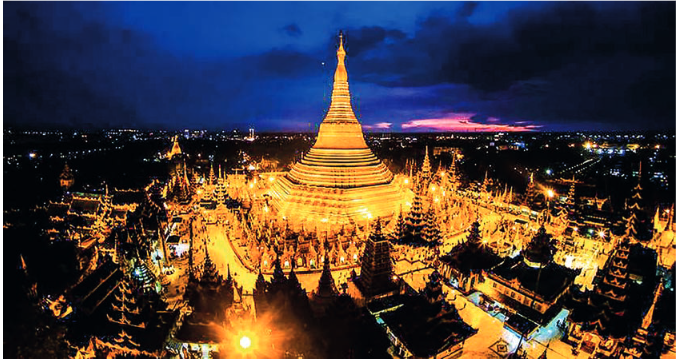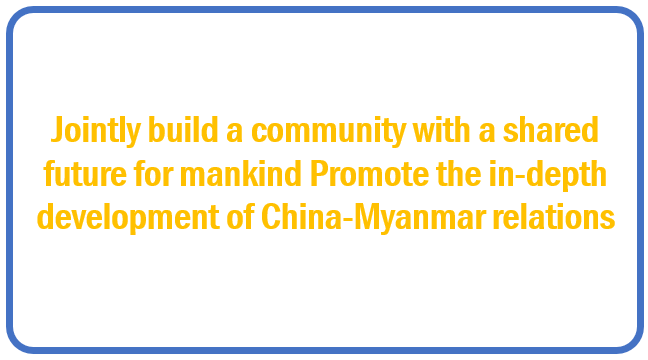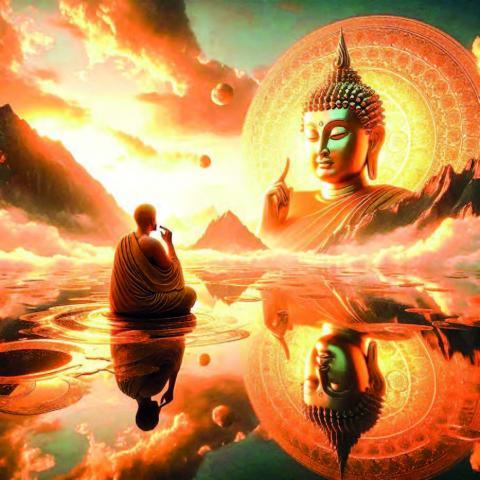A CCORDING to the chronicles, Bagan was founded in AD 107. Anawrahta, the first unifier of Myanmar, established “Theravada, Buddhism” with the help of Buddhist Missionary “Shin Arahan”.
Theravada Buddhism is more of a system of philosophy and practical ethics than a religion, and Buddhism is certainly not a religion.
In the coming October, the Six World Buddhist Forum is slated to take place in the city of Ningbo in east China, Zhejiang Province, with an aim to promote world peace improve the well-being and strength for building a community with a shared future for humanity. The Buddhists, experts, scholars and delegates from about 70 countries and regions around the world shall attend this forum.
Generally, in our childhood, we worship the Buddha, Dhamma and Samga according to traditional Buddhism. In this way, we have been obeying the law, disciplined, and avoiding evil since childhood.
The Five Precepts are the basic moral codes of conduct. Our life would be a truly happy one, and our society would become a much safer and more peaceful place if the Five Precepts were observed in earnest. When we examine the social implications of the Five Precepts, we find that: -
(1) To abstain from taking life (Killing)
(2) To abstain from taking what is not one’s own by right (Stealing)
(3) To abstain from sexual misconduct
(4) To abstain from untruthfulness and
(5) To abstain from intoxicating drinks and drugs
From the olden days to today, we all face absolutism, hegemonism, capitalism, neo-colonialism, fascism, terrorism and many wars because of greediness and anger. At least we can avoid many wars and armed conflicts by obeying the noble Buddhist five placepots and taking advantage of peace. So, the Five Precepts always give the destruction of life and the spirit of tolerance.
Remember the three fierce, unyielding enemies, namely, Greed (Lobha), Anger (Dosa) and Delusion (Mogha), which wage war on us.
“Theravada Buddhism advise every person to strive and work hard to achieve his goals, material or spiritual, through his efforts. It teaches every person to be kind and gentle. Buddhists are peace-loving people and have never made war. Today, there is violence everywhere in our society because many people are selfish and lack kindness.
Besides, Buddha’s “Mangala Sutta” gives us a positive Guideline for our life. If we consistently follow it, we shall progress both materially and spiritually; if we follow it, we will progress towards a happy life.
I think that if we all practice the noble Buddha’s “Mangala Sutta”, the world shall get true peace. The blessings that the Buddha enunciated in the Mangala Sutta are thirty- eight in number. If we carefully examine the thirty-eight blessings, we shall find that each is useful in itself and directly relevant to our lives. The first blessing, for example, tells us not to get involved with evil people and allow ourselves to be influenced by their wicked ways. The second one advises us to associate with good people, for such an association would bring us no harm and happiness and property.
May I say that it is the Buddha’s Dhamma that should be studied by one and all for a new insight into all mental issues that affect it?
Nowadays, there is dissatisfaction almost everywhere, and desertification creates ill feelings.
Ill-feeling creates Hatred. Hatred creates Enmity.
Enmity creates war. War creates Enemies. Enemies create Wars.
War creates Enemies and so on in a vicious circle.
Therefore, it is time for us to work and learn how to live the Buddha’s way successfully. Life, like the sea, has its waves of tricks, but the Buddha-Dhamma winds are strong enough to bring us through each wave successfully.
The noble Buddha, who points the way to eternal peace, has said,
“Victory breeds more Enmity and Hatred. Defeat brings humiliation, Frustration and all kinds of Disharmony. If the cause of strife is removed, there will be no more strife and Enmity and thus peace of mind and body will be secured”.
Every day, in a routine way, we may also strive to gain awareness of the Noble Eight-Fold Path, especially Right thought, speech, action, livelihood and effort. Every time our behaviour, which can be based on the moral (Sila), is free from “Lobha” (Greed), “Dosa” (Anger) and “Moha” (Ignorance), we should obey the virtues of loving-kind (Metta) and volition (Cetana) in connection with all social affairs every day.
Every Buddhist always pay homage to five Unique Benefactors,
(1) Gratitudes and dignities of Buddha are infinity. (Budda Guno Anando)
(2) Gratitudes and dignities of doctrines are countless (Dhamma Guno Anando)
(3) Gratitudes and dignities of monks have no limit. (Samgha Guno Anando)
(4) Gratitudes and dignities of parents are beyond. (Mata Petu Guno Anando)
(5) Gratitudes and dignities of teachers are limitless. (Accariya Guno Anando)
(1) We take refuge in the Buddha
(2) We take refuge in the Dhamma
(3) We take refuge in the Samgha
(4) We take refuge in the Parents
(5) We take refuge in the Teachers
(1) We observe the precept to abstain from attending to and killing living beings.
(2) We observe the precept to abstain from stealing and trying to spend one’s wealth.
(3) We observe the precept to abstain from sexual misconduct and unlawful cruel indulgence in another’s wife or husband.
(4) We observe the precept to abstain from telling all and from speaking filthy language to hurt part and parcel of another.
(5) We observe the precept to abstain from intoxication and drug abuse.
In conclusion, according to the five processes, our life would be truly happy, and our society would become safer and more peaceful, at least in the world. They will be able to live happily in a way that is genuinely Buddhist.
Source- The Global New Light of Myanmar



